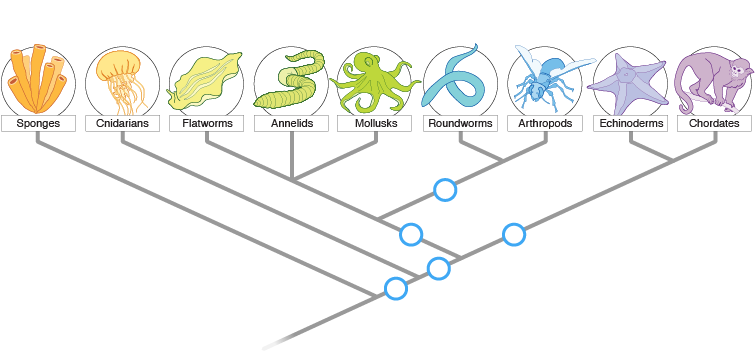
gut develops from back to front
growth occurs by molting
defined tissues
gut develops from front to back
bilateral symmetry

gut develops from back to front
growth occurs by molting
defined tissues
gut develops from front to back
bilateral symmetry